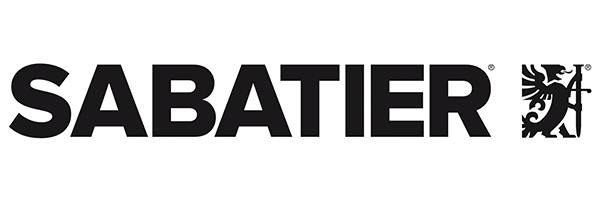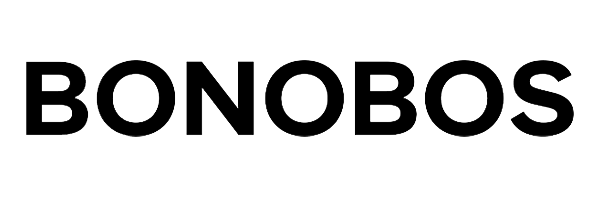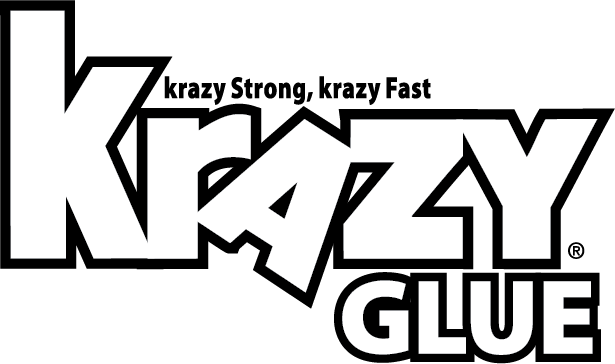Considered one of the biggest recent disruptors of the filmmaking industry, virtual production is taking the world by storm. This hugely impressive technology has seen massive improvements over the past couple of years, which have a lot of people trying to determine the best way to use it.
The goal of virtual production is to recreate what has been done over the past century with physical production but with the use of computer-generated imagery (CGI) instead.
When you think about the ways this could be applied, the possibilities are truly limitless. From the history of virtual video production to the most popular software it uses, you’ll quickly see why so many people are developing an interest in this incredible new tool.
What is Virtual Production?
Though it has gone by many names over the years, virtual production is a combination of physical and digital media that integrates CGI and visual effects. This form of production is most often used in films but has a wide range of uses that continues to grow. Video games and even the marketing industry are finding ways to use virtual production more frequently now.
The combination of digital filmmaking tactics used by video production companies makes up a huge portion of what is seen in movies, television, and advertisements today. Digital media production incorporates the use of lighting, real-life photographs, camera angles, and many other factors to create something that appears to be 3D.

Virtual production is the best way to capture scenes that would be difficult or even impossible to film in a real-world setting. It takes out the factors of weather, recreating backgrounds, and other time-related tasks by simply being generated and displayed using computer software. It can be used with everything from animation to adding CGI effects to a live-action movie or television show.
When used in filmmaking, directors often capture scenes using a variety of tactics which are then adjusted and enhanced during post-production. These techniques date all the way back to the 1950s and beyond.
A Brief History of Virtual Production
There’s no question that the film industry has come a long way since the first silent movies back in the late 19th century. You need only look at the spectacular visuals found in modern virtual production movies like Avatar, The Martian, Interstellar, and others to see the incredible improvements this technology has seen over the years.
Virtual production, also commonly known as “virtual cinematography”, has been around for over a century now. And while it is more advanced than ever, it’s exciting to see how quickly virtual production software has improved since it was first discovered.
This opens up the opportunity to look at the various types of virtual video production that have been used in popular movies in the past.
Rear Projection
This is an easily recognizable technique that filmmakers and directors have been using for a long time. It integrates the use of a pre-filmed background to show distant footage that was then added to a scene being filmed in the foreground. The background images are projected in reverse on a large screen to become the natural surroundings for the sequence.

Most commonly used in scenes where actors were driving a vehicle, there were many uses for this creative production tactic.
We can jump all the way back to the year 1959 with the famous Cary Grant movie North By Northwest to see one of the most well-known times a rear projection screen was used. In the scene, the main character named Roger O. Thornhill is being chased and shot at by an airplane coming from the background. In the foreground, Thornhill is seen ducking and taking cover behind rocks as he tries to dodge his attacker.
A few classic movies that used rear projection include:
- Psycho (1960)
- Aliens (1986)
- Terminator 2: Judgment Day (1991)
- Pulp Fiction (1994)
- Eyes Wide Shut (1999)
While rear screen projection is a much less common form of virtual production nowadays, it is still used on occasion in big-budget films with more advanced equipment.
Front Projection
On the opposite side of rear projection is its counterpart known as front projection. While rear projection requires a larger amount of space to place the projector behind the designated screen, front projection simply focuses the image on a screen that is up against a wall. The projector can be mounted anywhere from the floor to the ceiling or even on an adjacent wall.
While front projection has its uses, issues can arise from having items or individuals between the screen and the projector. This creates shadows and can ruin a shot when it’s used in filmmaking or other tactics.
Due to the ability to use various camera angles, front projection was used when filming Superman: The Movie starring Christopher Reeve in 1978. It was the main tactic when they were capturing Superman’s flying scenes with various backgrounds he was passing by.
Matte Paintings
Used in films ranging from the original Star Wars series and Titanic to Mary Poppins and Indiana Jones, matte paintings are illustrated depictions of big cities, distant landscapes, and other sets. They were placed as the background of a scene, making it appear the filming was done at the actual location.
A few other examples where matte paintings were used include ancient Rome in the movie Ben-Hur, the fortress of solitude in Superman: The Movie, and many landscapes depicting the land of Fantastica in The NeverEnding Story.
CGI
Both rear and front projection were limited in their capabilities due to the flat dimension of the background screen. Directors couldn’t shoot or see a perspective change because it had to be filmed from only one angle to maintain visual accuracy.
But that all changed when computer-generated imagery (CGI) came into play.
The CGI definition is a process of creating special effects using virtual production software that is then merged with previously filmed scenes. These visual effects (VFX) have been used in thousands of ways across movies, television shows, commercials, advertisements, and more.

The first movie known to use CGI was the original Westworld, which came out back in 1973. Though its capabilities were limited at the time, Yul Brenner’s robotic character had moments where his pixelated “computer” vision came on the big screen. This sparked a mad dash for other movies to incorporate this impressive technology including classic films like Tron and Star Trek.
Some other well-known instances of CGI can be found in:
- Young Sherlock Holmes (1985) – Pane of glass
- Abyss (1989) – Water tentacles
- Jurassic Park (1993) – Dinosaurs like the Tyrannosaurus Rex
- The Crow (1994) – Brandon Lee face replacement
- Forrest Gump (1994) – Lieutenant Dan’s missing legs and an animated flock of birds
Background Replacement (Blue Screen & Green Screen)
When digital media production came into play, filmmakers were able to use a blue screen (and eventually a green screen) to replace the background with whatever they wanted. Taking over for rear and front projection, this technology allowed directors to adjust more of the scene and open up the space for various camera angles.

It even made it possible for live actors to find themselves within a cartoon world like Michael Jordan in Space Jam.
Background replacement has also been used frequently in Star Wars movies as well as other popular flicks like Sin City, Guillermo del Toro’s Pan’s Labyrinth, many of the Marvel films, and even as a backdrop in Ben Affleck’s Gone Girl. A more simple version of it is seen when you consider weather reports on local news stations.
Modern Virtual Technology Using Unreal Engine 4
The most common name in the modern virtual production industry is Unreal Engine. They quite literally wrote the book on the subject in the form of their Unreal Engine Virtual Production Field Guide.
While the incredible tech used by this game engine was once only used in the video game industry, they have recently made their way into filmmaking.
UE virtual production tools and hardware have become powerful enough to push photo-realistic computer-generated images in real-time as we saw in the spectacular PlayStation 5 demo launch.
Instead of using background replacement with a green screen, UE4 virtual production uses high-resolution LED screens. Actors, directors, and set hands are all able to instantly see and change the scenery while on-set.
With digital screens, the entire scene can be controlled including everything from the weather and time of day to the viewpoint. On top of that, the scene changes along with the movement of the camera to ensure the background appears realistic and maintains accurate dimensions. This is possible since the camera and lens data are being streamed directly into the game engine along with the position of the camera.
Although Unreal Engine virtual production is still considered to be in its infancy, Jon Favreau brings it to life in the epic Disney series called The Mandalorian. Now with multiple seasons, this iconic show has taken Disney+ subscribers by storm.
Seeing The Mandalorian virtual production improve with each episode has captured an audience of millions. From the incredible landscapes to the performance captures of the various characters, these virtual visuals are some of the best the film industry has ever seen.
Disney has also used virtual production to create the “light speed” effect in Solo: A Star Wars Story as well as with aspects of the photorealistic animated remake of The Lion King in 2019. The live-action creation of Cruella starring Emma Stone is among the most recent films using virtual production to capture the essence of 1970s London.
Virtual production will gain significant traction moving forward as the film industry recognizes the potential and its possibilities.
Benefits of Virtual Production
With so many ways to create films, marketing videos, and other productions, it’s a good idea to know the perks of each option available to you. Much of your decision will stem from what you want to achieve and whether virtual production is needed to reach your goals.
There are many advantages to using VFX and other types of virtual video production for various needs.
1. Film Whenever You Want
Thanks to adaptive screens and the Unreal virtual production tech, directors no longer have to wait for the ideal film setting. There is no need to delay while preparing for ideal weather conditions with the sun, rain, and other elements. Instead, a filmmaker can get it exactly the way they want by using the software to adjust it perfectly to their specifications.

Whether the scene requires a snowy backdrop in the mountains or a vast desert landscape without a cloud in the sky, it can all be created from a computer.
2. Bring Up Previous Scenes with a Click
Back in the day, if a scene needed to be refilmed, the entire set would have to be built again exactly the way it was before. But now, crews don’t have to spend time building sets and props over and over. If something ever needs to be refilmed, the previous set can simply be pulled up in the software system, placed on the screen, and captured properly.
3. Cost Savings
Thanks to the amount of time saved when using virtual production software, you will see that savings converted into a bigger budget and money that can be used in other ways. Fewer sets will have to be built since so much can be created digitally within a matter of minutes or even seconds.
4. Maintain Accurate Dimensions
One of the most impressive aspects of UE4 virtual production is that the background adjusts with the perspective of the camera. The visible section of the background seen by the camera lens then moves in the 3D space. This means trees, mountains, buildings, or other landmarks will move at the appropriate speed whether they are in the foreground or the background.
5. Less People Needed On-Set
While it still takes the efforts of many individuals to create a dynamic or captivating film, virtual production limits the need to have all of these people there at all times. This new tech makes it more of a reality for individuals within the film industry to work remotely.
They can edit, detail, and do various other tasks from the comfort of their own home or office space.
6. Opens Up New Opportunities
While virtual production likely won’t do away with all other forms of film creation, it is a rapidly growing option for people across numerous industries. This technology is constantly improving and is even another tool in the toolbox for video marketers, especially ones who are already using CGI and VFX.
Relevant Applications for Virtual Production
With so many ways virtual production can be used, it offers seemingly limitless possibilities for creators across the globe.
Video games have been using virtual production software and techniques since the turn of the century in the early 2000s. Though similar techniques can be traced back to the 1990s in the creation of games like id Software’s original Doom.
Some of the most recent applications of the virtual production Unreal Engine in video games have been used by companies like Epic Games who developed the global phenomenon of Fortnite.
Believe it or not, the entertainment and gaming industries aren’t the only ones that get the perks that come with virtual production. With hundreds of potentials uses, companies all over the world now have access to use this new tool in their business.

This growing improvement to VFX can be integrated into various types of video content for businesses including:
- Brand Videos
- TV Commercials
- Explainer Videos
- Social Media Ads
- Branded Video Content
- Promo Videos
- How-to Videos
- and so many more!
UE5 Release Date
If Unreal Engine 4 wasn’t already a big enough deal, the announcement of Unreal Engine 5 (UE5) has created an entirely new buzz across various industries. It is projected to be much faster and offers even better video quality than its predecessor. Though there isn’t a definitive UE5 release date yet, the upgrade is expected to drop sometime in late 2021.
Take Advantage of Creative Agency with Virtual Video Production
The benefits that come with using virtual production can’t be overstated. There are so many opportunities and uses for this amazing technology that has barely begun to scratch the surface.
Quickly becoming one of the biggest disruptors of visual technology, there’s no better time to see how you could use virtual production for yourself or your business.


































